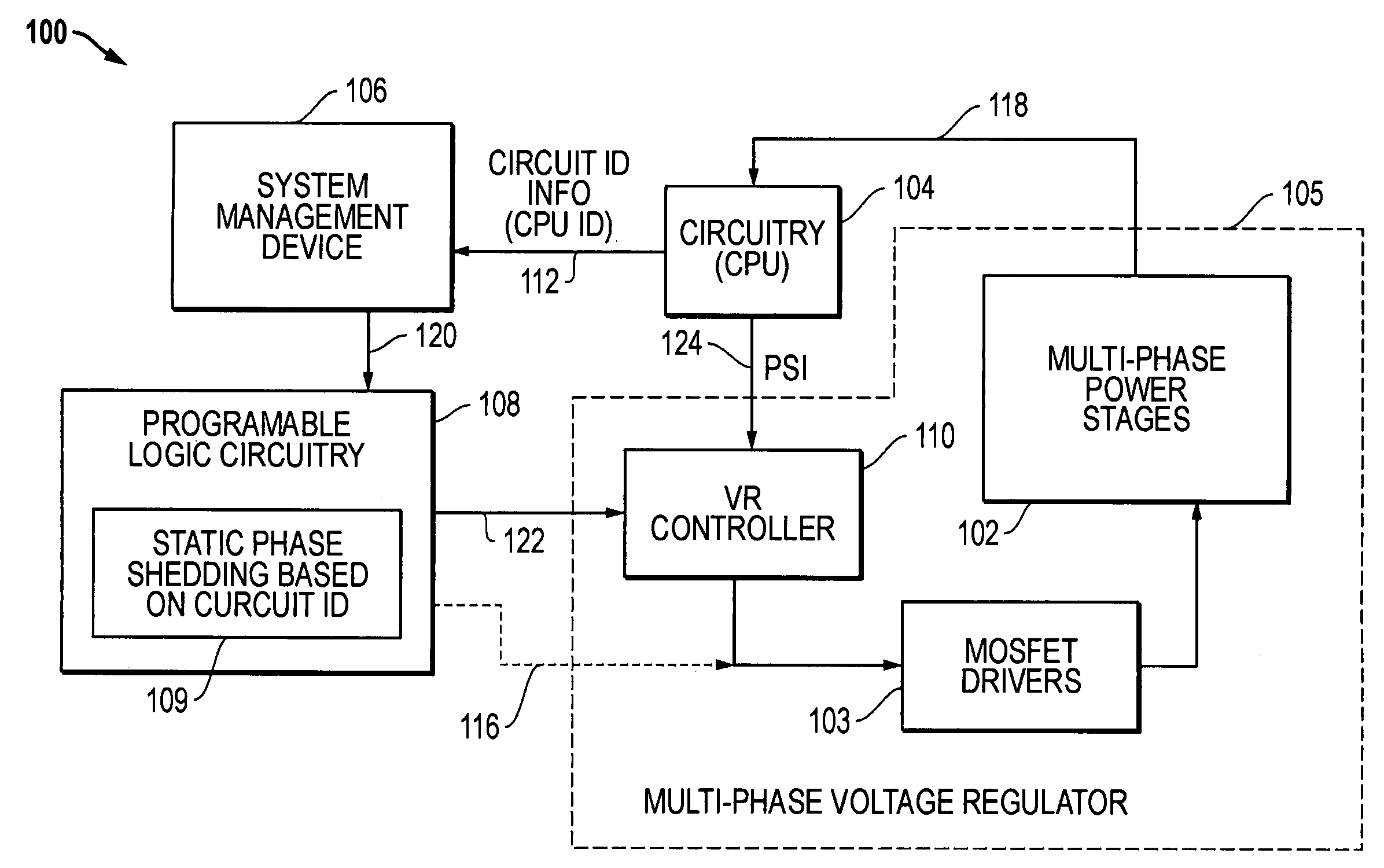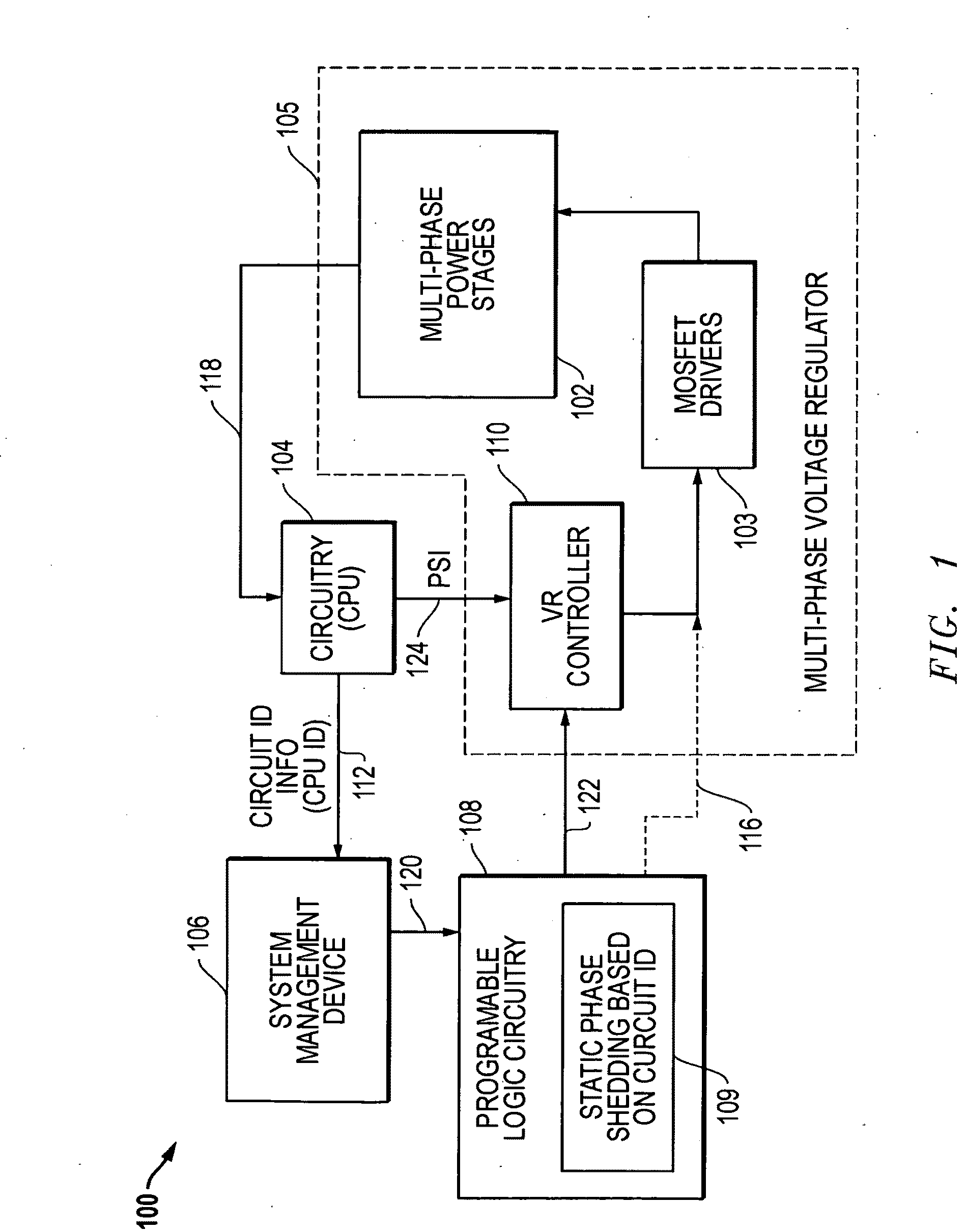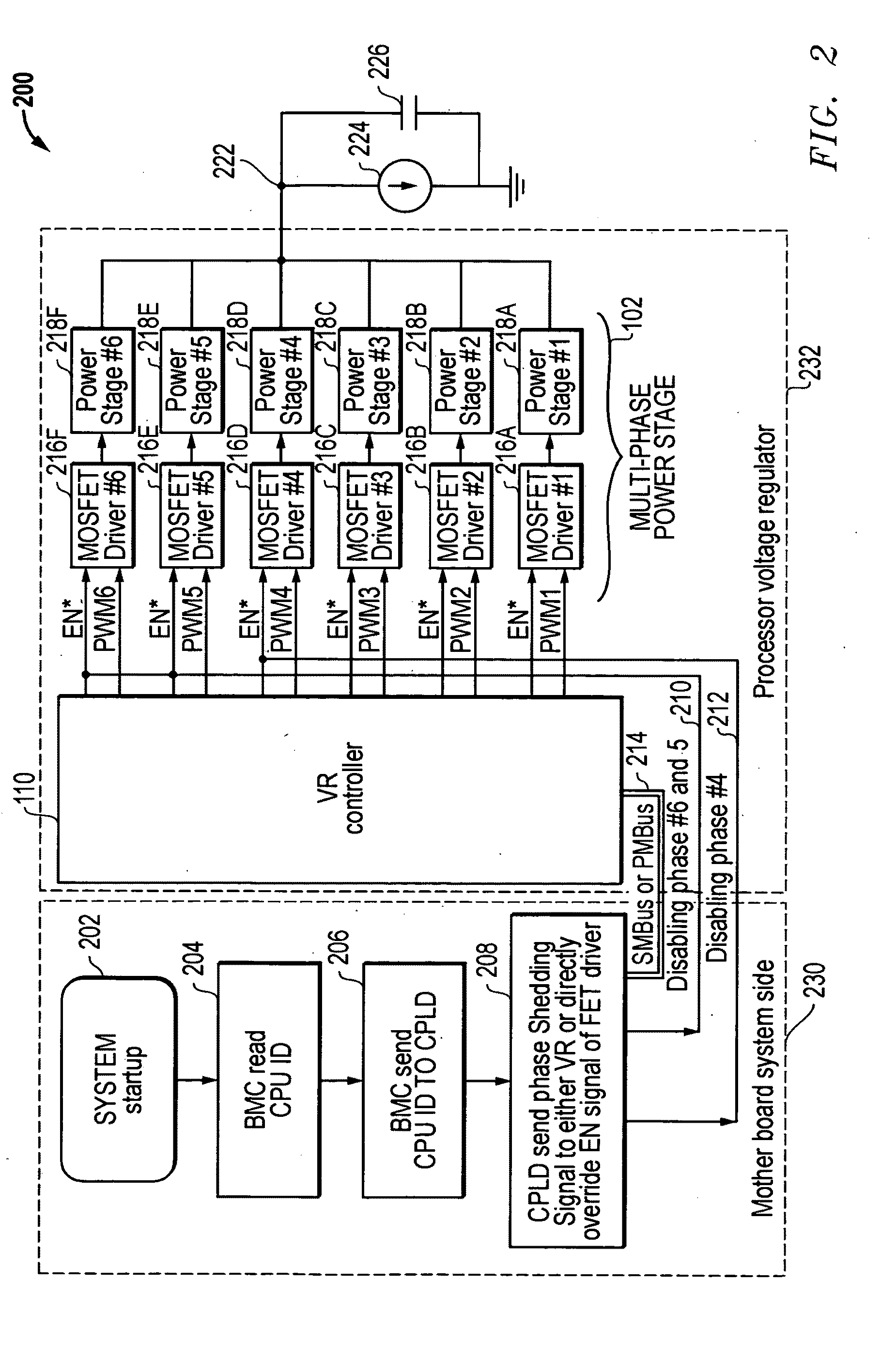Static phase shedding for voltage regulators based upon circuit identifiers
a voltage regulator and circuit identifier technology, applied in the direction of electric variable regulation, process and machine control, instruments, etc., can solve the problems of ineffective solutions, cpu usually has maximum power consumption, and prior methods that have not been successfully implemented in cpu vr
- Summary
- Abstract
- Description
- Claims
- Application Information
AI Technical Summary
Benefits of technology
Problems solved by technology
Method used
Image
Examples
embodiment 100
[0022]FIG. 1 is a block diagram of an embodiment 100 for a static phase shedding system for controlling a multiphase voltage regulator. As depicted, a multi-phase VR 105 provides regulated voltages to circuitry 104, such as a central processing unit (CPU) through VR lines 118. The circuitry / CPU 104 is coupled to a system management device (SMD) 106, such as board management controller (BMC), and provides circuitry identifier (ID) information 112, such as a CPU ID, to the SMD 106. The SMD 106 is coupled to provide control signals 120 to programmable logic circuitry (PLC) 108, such as a CPLD (complex programmable logic device), configured to provide desired phase control. For example, a static phase shedding control module 109 can be provided within the PLC 108 to provide static phase shedding based upon circuit ID information 112, such as a CPU ID. The PLC 108 in turn sends phase control signals 122 to the VR controller 110. The VR controller 110 in turn provides phase control signal...
embodiment 200
[0024]FIG. 2 is a more detailed block diagram for an example static phase shedding embodiment 200 using a BMC as the SMD 106 and a CPLD as the PLC 108. As depicted, the embodiment 200 includes mother board system side processes 230 and a processor voltage regulator (VR) 232. The mother board system side processes 230 describe processes that occur in the initialization and selection of the number of active phases for the processor VR 232. The processor VR 232 produces a regulated voltage output 222 that drives a processor load represented by current source 224 and capacitor 226.
[0025]Looking to the mother board system side processes 230, block 202 represents the startup of the system. In block 204, a BMC or BIOS (as discussed below) reads and / or receives the CPU ID for the CPU installed in the system. In block 206, the BMC sends the CPU ID to a controller, such as a CPLD, configured to control on board system operations. In block 208, the CPLD sends phase shedding control signals to ...
embodiment 300
[0032]FIG. 3 is process flow diagram of an embodiment 300 for static phase shedding control of a multi-phase voltage regulator where three levels of processors are expected to be installed. Block 302 represents the start-up of the system. In block 304, all VR phases are enabled for maximum power rating capability. In block 305, the CPU ID information is determined and reported to the phase control circuitry. As indicated above, this control circuitry could be implemented using a variety techniques, including the use of a BMC or system BIOS to read the CPU ID from a specific register and then to send the CPU ID information to a programmed CPLD. In decision block 306, a determination is made concerning the desired number of active phases for the VR based upon the power level requirements indicated by the CPU ID. Block 308 is then selected if a 3-phase configuration is desired, for example, where the processor identifier information indicates lower level power requirements. Block 310 i...
PUM
 Login to View More
Login to View More Abstract
Description
Claims
Application Information
 Login to View More
Login to View More - R&D
- Intellectual Property
- Life Sciences
- Materials
- Tech Scout
- Unparalleled Data Quality
- Higher Quality Content
- 60% Fewer Hallucinations
Browse by: Latest US Patents, China's latest patents, Technical Efficacy Thesaurus, Application Domain, Technology Topic, Popular Technical Reports.
© 2025 PatSnap. All rights reserved.Legal|Privacy policy|Modern Slavery Act Transparency Statement|Sitemap|About US| Contact US: help@patsnap.com



